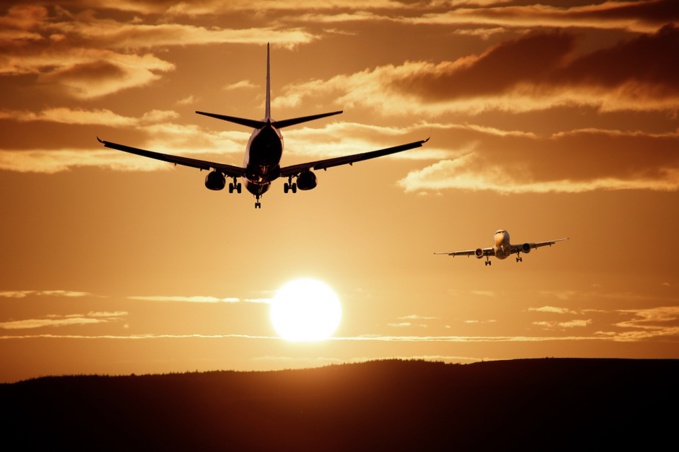The indicator of compliance with schedule is no less important than quality of in-flight services, or a set of services provided by airlines. To compile the rating, FlightStats analyzes data from 500 different sources, including information from the US Department of Transportation, the European Organization for the Safety of Air Navigation, networks for tracking passenger flights, dispatch services, airlines themselves, and so on. In 2016, according to FlightStats, Dutch company KLM (probability of delay - 11.47%) was the most efficient commercial air carrier of those 40 included. The airline ranked fourth in 2015.
The second with quite a small gap from the leader is the largest Spanish airline Iberia - likelihood its flight delays was 11.82%. The top ten also includes Japan Airlines (12,2%), Qatar Airlines (13,66%), Austrian Airlines (14,26%), ANA (14,46%), Singapore Airlines (14,55%), Delta Air Lines (14,83%), TAM Linhas Aereas (14,93%) and Qantas (15,7%). At the opposite end of the rankings were mostly Asian airlines, and the last two places were taken by Icelandair (41,05%) and El Al (56%).
Vice president of FlightStats Jim Hetzel told to Bloomberg that results of 2016 were the best of all time of the rating’s existence. "I see a significant improvement in performance as on how the industry is becoming more and more competitive. And it's a big advantage for passengers", - he said.
Nearly half the world's population - 3.7 billion - traveled on scheduled flights of airlines around the world in 2016.
According to preliminary data of the International Civil Aviation Organization (ICAO), the number is 6% more than in 2015. In total, about 35 million of regular flights have been made last year in the world. On average, each flight carried about 106 passengers.
ICAO says that profitability of air transport increased by 6.3% in 2016, while there was a decrease of this index by 7.1% in 2015.
The highest profitability growth was recorded in the Middle East (+ 11.2%), Asia-Pacific (+ 8%) and Latin America (+ 6.5%). Positive dynamics was also recorded in Africa (+ 5.7%), in Europe (+ 4.3%) and North America (+ 3.5%).
Despite the relatively small revenue growth, Europe still accounts for the largest share of international air travel (36% of the total market). Asia Pacific was the second with the figure of 29%, while the Middle East has moved to the third place (15%).
According to ICAO’s data, more than half of the world's tourists, who had traveled in the past year across international borders, chose air conveyance. Air transport accounted for about 35% of world trade in value terms.
For the first time in the history of civil aviation, total passenger flow of low-cost airlines exceeded one billion passengers (28% of total world passenger traffic). The greatest number of travelers were transported by low-cost airlines in Europe (32%). On the second place are Asia-Pacific airlines (31%), and the third is taken by North American airlines (25%).
source: bloomberg.com
The second with quite a small gap from the leader is the largest Spanish airline Iberia - likelihood its flight delays was 11.82%. The top ten also includes Japan Airlines (12,2%), Qatar Airlines (13,66%), Austrian Airlines (14,26%), ANA (14,46%), Singapore Airlines (14,55%), Delta Air Lines (14,83%), TAM Linhas Aereas (14,93%) and Qantas (15,7%). At the opposite end of the rankings were mostly Asian airlines, and the last two places were taken by Icelandair (41,05%) and El Al (56%).
Vice president of FlightStats Jim Hetzel told to Bloomberg that results of 2016 were the best of all time of the rating’s existence. "I see a significant improvement in performance as on how the industry is becoming more and more competitive. And it's a big advantage for passengers", - he said.
Nearly half the world's population - 3.7 billion - traveled on scheduled flights of airlines around the world in 2016.
According to preliminary data of the International Civil Aviation Organization (ICAO), the number is 6% more than in 2015. In total, about 35 million of regular flights have been made last year in the world. On average, each flight carried about 106 passengers.
ICAO says that profitability of air transport increased by 6.3% in 2016, while there was a decrease of this index by 7.1% in 2015.
The highest profitability growth was recorded in the Middle East (+ 11.2%), Asia-Pacific (+ 8%) and Latin America (+ 6.5%). Positive dynamics was also recorded in Africa (+ 5.7%), in Europe (+ 4.3%) and North America (+ 3.5%).
Despite the relatively small revenue growth, Europe still accounts for the largest share of international air travel (36% of the total market). Asia Pacific was the second with the figure of 29%, while the Middle East has moved to the third place (15%).
According to ICAO’s data, more than half of the world's tourists, who had traveled in the past year across international borders, chose air conveyance. Air transport accounted for about 35% of world trade in value terms.
For the first time in the history of civil aviation, total passenger flow of low-cost airlines exceeded one billion passengers (28% of total world passenger traffic). The greatest number of travelers were transported by low-cost airlines in Europe (32%). On the second place are Asia-Pacific airlines (31%), and the third is taken by North American airlines (25%).
source: bloomberg.com



















